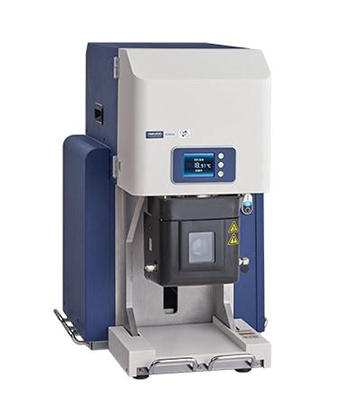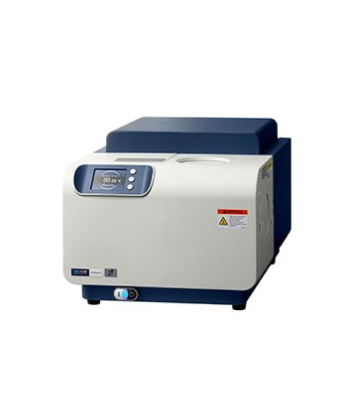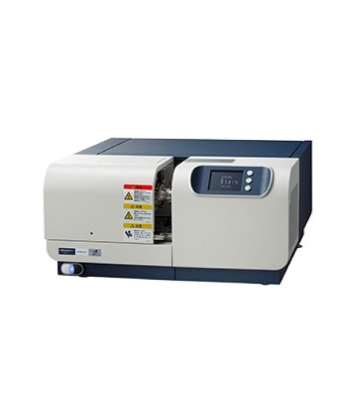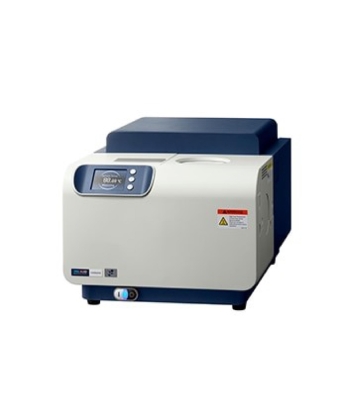Dynamic Mechanical Analyzer (DMA) NEXTA® DMA Model:DMA200
The Dynamic Mechanical Analysis (DMA) technique enhances sensitivity in measuring glass transition, material stiffness and the impact of frequency on mechanical traits. It gauges the viscoelastic properties of materials. Reliable for product engineers in applied research and materials development, DMA analyzers offer precise measurements of mechanical properties for simple and complex materials.
Our DMA features an innovative Real View® camera system that offers real-time observation during measurements, aiding in understanding unexpected behaviors like sample damage or color shifts. It also ensures the verification of data point reliability, even after the measurement process is concluded. And, with its exceptionally wide measurement range and rapid electronic response, our DMA is the perfect tool for assessing both stiff and soft samples, while also capturing rapid modulus changes.
Our DMA features an innovative Real View® camera system that offers real-time observation during measurements, aiding in understanding unexpected behaviors like sample damage or color shifts. It also ensures the verification of data point reliability, even after the measurement process is concluded. And, with its exceptionally wide measurement range and rapid electronic response, our DMA is the perfect tool for assessing both stiff and soft samples, while also capturing rapid modulus changes.

-
Product Highlights
Comprehensive material characterization made easy- Utilize the 20N force range for analyzing stiff materials, ideal for carbon fiber composites and other high-performance materials.
- Access a wide applied force range with 5E-6N resolution and minimal output signal noise, enabling the detection and resolution of even the smallest transitions.
- Opt from air, liquid nitrogen (LN2) or electrical gas cooling options; electrical gas cooling relies on power, eliminating external resources, while our LN2 cooling platform reduces its consumption by up to 30%
- Easily validate your results during or after analysis with the Lissajous monitor function, ensuring confidence in your results.
- The Real View® system, various measuring modes, rapid modulus change detection and advanced analysis provide versatile insights for research.
- Maximize convenience with our user-friendly 'Guidance Mode' software, providing step-by-step measurement and analysis guidance for non-experts. Advanced options such as master curve (TTS) and activation energy calculations support various applications and are included as standard.
- Our DMA instrument meets ISO, ASTM, DIN, and JIS standards, with essential specifications like ISO 6721-11, ASTM D7028 – 07, IPC 2.4.24.2, JIS K7095 and more integrated into the software.
-
Deformation mode options Tension, single/dual cantilever, 3-point bending, shear, film-shear, compression Maximum Force 20N Modulus Range 103 to 1013.5 Pa Measurement mode Dynamic measurements: sinusoidal wave / synthesis wave oscillation modules
Static measurements: program stress control / program strain controlFrequency Sinusoidal wave oscillation: 0.01 to 200Hz, max 20 frequencies
Synthesis wave oscillation mode: 5 frequenciesTemperature range Liquid nitrogen cooling -150 to 600C Liquid nitrogen cooling -150 to 600C Air cooling RT to 600C Sample observation Real View® ready Driving shaft Spring mounted (no compressed air required) Sensor LVDT Dimensions 420(W) x 630(D) x 725(H) mm -
▶ Automotive Industry: Used to evaluate the material properties of automotive parts, such as the elastic modulus, fatigue resistance, and other characteristics of plastics, rubber, and metal materials.
▶ Aerospace Industry: Used to assess the performance of aerospace materials, such as the thermal stability and mechanical properties of aerospace composite materials.
▶ Electronics and Semiconductor Field: Used to evaluate the packaging materials of electronic components, such as the mechanical and thermal properties of plastic packaging and thermal conductive adhesives.
▶ High-Performance Materials: Used to assess the performance of high-performance materials, such as the elastic modulus, tensile strength, and other properties of composite materials like fiberglass and carbon fiber.
▶ Chemical Industry: Used to evaluate the material properties of chemical products, such as the viscoelastic characteristics of polymers, coatings, and adhesives.
▶ Biomedical Engineering: Used to assess the material properties in the field of biomedical engineering, such as the viscoelastic characteristics of hydrogels, biomedical membranes, and contact lenses.










